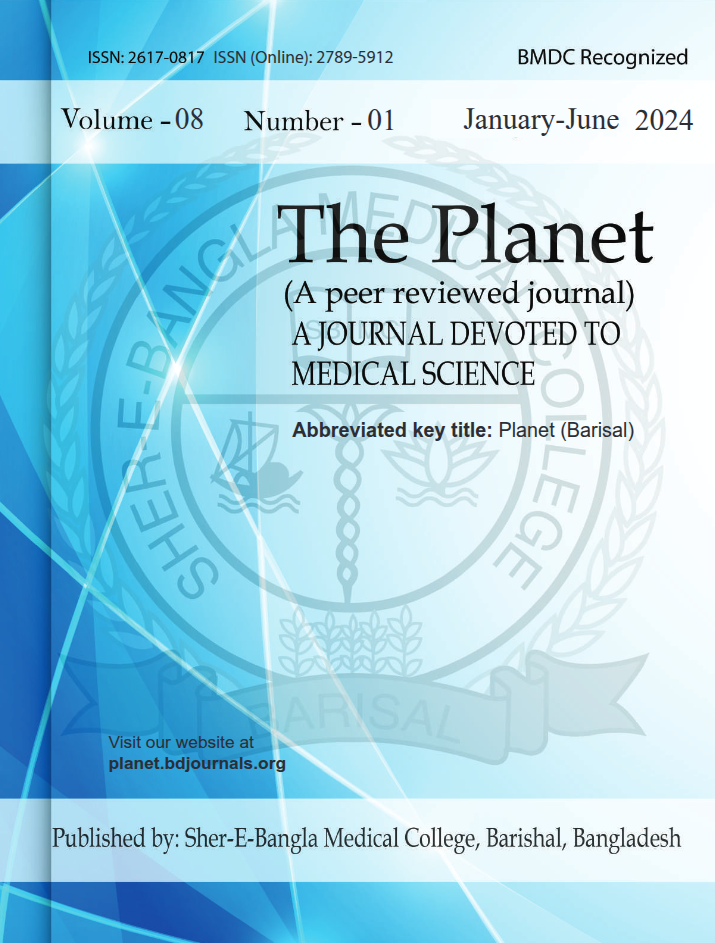Abstract
Background: Dry Eye Syndrome (DES) is a common ocular condition characterized by discomfort, visual disturbances, and potential damage to the eye's surface. It is increasingly prevalent among individuals who spend prolonged periods using digital screens, such as office workers. Methods & Materials: This cross-sectional study was conducted among 107 office workers in Shantinagar, Dhaka, Bangladesh, from January 2023 to December 2023, to evaluate the prevalence of Dry Eye Syndrome (DES) and its association with clinical and environmental risk factors. The data were analyzed using SPSS version 25, with descriptive statistics to summarize participant characteristics, and Chi-square tests for associations between categorical variables. Result: Among 107 office workers, 51.4% had Dry Eye Syndrome (DES), with screen time >8 hours, reduced blinking, contact lens use, and air-conditioned offices as key risk factors (p < 0.01). DES was linked to eye fatigue (76.6%), dryness (68.2%), and reduced tear film stability (p < 0.001). Preventive measures, including the 20-20-20 rule, blinking exercises, lubricating drops, and omega-3 supplements, significantly lowered DES prevalence, emphasizing their role in workplace eye health. Conclusion: This study highlights a high prevalence of Dry Eye Syndrome (DES) among office workers using digital screens, driven by prolonged screen time, reduced blinking, contact lens use, and poor workplace conditions. DES was associated with significant ocular symptoms and tear film instability, but preventive strategies like the 20-20-20 rule, blinking exercises, lubricating drops, and omega-3 supplementation effectively reduced its prevalence.

This work is licensed under a Creative Commons Attribution 4.0 International License.
Copyright (c) 2024 The Planet


 PDF
PDF